Our last report was sent from Ostuni before heading back to Ceglie Messapico for lunch at Al Fornello da Ricci . This was one of Sir Fred's recommendations, and confirmed by a number of locals, so we could not resist. The restaurant has a Michelin star and notwithstanding the "bible's" indication that the meals were "moderate to expensive", we decided we deserved a treat...so what the heck. The food was excellent and started with a palate cleanser with wine to match. Then antipasti for two which featured 12 different local specialities, some remotely familiar, others not so. The latter group included snails which Stu declared to be an acquired taste but one that he didn't think he would be in Italy long enough to acquire. They were all mini plates and we had been told it was a complete meal in itself [they got that right]. We followed the antipasti with the restaurant’s signature dessert. A concoction of almond, creamed ricotta and chocolate dribble. The antipasti was accompanied by a white wine from the cellar, every bit as good as any white we had tasted in Italy and with the dessert, a local dessert wine. It was a great meal and the price was far less than we had expected, so a double bonus .
The next day we were on the road by 9.00 am aiming for two stop-offs [Grottaglie and Matera] en route to Calabria. Grottaglie [pop ~ 33,000] is a ceramics town with whole streets being devoted to ceramic workshops and shops. In most cases, the shop and workshop are on the same premises. The quality is exceptionally good and we felt obliged to assist the local economy. This particular artisan/shop owner had spent a year in Melbourne when he was 12 years old, spoke reasonably good English and was able to give us a load of information on the ceramic industry generally and Grottaglie, in particular. Apparently, the town’s name is derived from the Latin kriptalys, referring to the presence of caves in a large part of its territory. In times of attack by raiders, foreign armies and other just plain bad folk, the caves became sanctuaries for the people forced out of their houses. The underlying rock in the region is the soft tuff which is easily worked and facilitated easy development of the cave communities .
Such caves were to be a common theme for the day, with our second scheduled stop being Matera about 40 kms north of the coast in Basilicata. Matera [pop ~ 60,000, the 2nd largest in Basilicata] is one of the oldest continuously occupied cities in Italy, dating back to Palaeolithic times. It is built around three large valleys with the local rock again being the soft tuff. The natural caves afforded the early dwellers [probably 10,000 - 15,000 years ago] some shelter. Over the years, the number of caves [sassi] grew as the inhabitants became more static and [literally] put down roots. In time, more recognisable man-made dwellings were built adjacent to the sassi. However, the sassi became the shelter option for the less wealthy people and those who were refugees from other areas - a significant number of Jews settled in them after being expelled from Oria in the 1400s. Many of the original caves have survived over the years and even as late as the early 20th Century were regularly being inhabited . The caves, however, remained at the bottom of the status heap. Next were the old houses and churches which climbed out of the valley away from the river and finally, in more recent times [ie, after the 1600s], the "modern" city was established on the higher ground. Thus the city developed in the reverse order to other towns, rather than the new areas flowing down the hill, in Matera, they climbed upwards. Over the years, Matera endured the change management sequence experienced elsewhere in Italy. However, the main attraction remained the sassi which eventually saw Matera being recognised as a UNESCO World Heritage site in 1993. Many sassi are now being restored with modern essential services and re-occupied [by the young and trendy].
Matera’s next claim to fame occurred during WWII. In September 1943, the city became the first in southern Italy to rise up against the fascists. The Materans, assisted by local elements of the Italian Army, attacked Germans who had been looting the town ahead of their withdrawal from the area . 24 locals were killed in the ensuing fight and in the subsequent reprisals by the Germans. After the war, the central government recognised the stand by the city against the oppressors by awarding it the Silver Medal for Military Valour.
Two other items of interest on Matera:
- Because of its “ancient” appearance, the old city has been used as the location for at least 19 movies including Mel Gibson’s “Passion of Christ” [2005] and “The Nativity Story” [2006] which starred NZ’s own Keisha Castle-Hughes.
- Matera has a rugby club. Italy is a soccer crazy country where their 100 page weekend sports newspaper devotes about 95 pages to soccer and all other activities fight for space in the remaining five. Rugby is starting to make some small inroads in the northern provinces; to find a rugby outpost this far south, however, is quite unusual.
We had been on the road for almost nine hours by the time that we arrived at our next stopover, Vibo Marina. So we were not that impressed to find that the accommodation was not ready for us. To make matters worse, we found that while cell phone coverage was OK, their wi-fi did not work properly. Fortunately, the situation improved slightly over the next couple of days, even though the wi-fi remained intermittent. However, when the hosts eventually provided things like towels, and other essentials that are normally provided in self contained apartments, it became a reasonably nice place to stay, well designed modern décor, very comfortable, and only a five minute walk from the town and the sea.
Our day trips in the area included:
- Tropea. While the recorded history of Tropea dates back to Roman times, legend has it that the founder was Hercules who, returning from Spain stood here on the Coast of the Gods and thus Tropea became one of the ports of Hercules. With its prominent position on the coast, Tropea played an important role, both in Roman times and later under the Normans and the Aragonese. Today, Tropea [pop ~ 7000] boasts 8th and 9th Century palaces and a 12th Century Norman Cathedral; it is also a major mecca for beach lovers. The waters in this area of the Mediterranean – the Tyrrhenian Sea – are relatively clean, turquoise blue and very enticing. We had a great lunch here in Tropea; risotto marinara with a side of roast capsicum. Quite delicious.
- Pizzo. A coastal town about 9 kms north of Vibo Marina. Similar history to other coastal towns, being initially established as part of Magna Graecia. Very picturesque piazza - Piazza dell Repubblica - [arguably the prettiest we have seen to date] on the edge of the town which overlooks the sharp drop to the water’s edge below. On the edge of the piazza is an Aragonese Castle built in the late 1400s. The latter came into its own in 1815 when Joachim Murat, the King of Naples was captured, held prisoner in the castle and subsequently executed. Murat was a protégé of Napoleon Bonaparte and rose from private soldier to become a Marshal in Napoleon’s Army. He was primarily in charge of the cavalry which was the key to many of Napoleon’s successes. It probably helped that he had also married Napoleon’s sister, Caroline. Murat’s fall from grace started when in 1805, he was appointed King of Naples [then under French rule]. He was not well regarded by the Italians, whom he dealt with somewhat harshly. His fall was accelerated when he lost a battle with the Austrians in the Ancona area in 1815 and he was forced to flee to Puglia. He then decided to return to Naples with a handful of loyalists in an attempt to regain his throne. Bad decision, because the ship was hit by a severe storm and they were forced to land at Pizzo. There he was recognised by the locals who quickly decided that once as King of Naples was enough and opted to kill off any further ambitions he might have had while they had a chance – captured on 8 October, incarcerated and tried over the next five days and shot on 13 October. Not the most successful homecoming. [13 October 1815 happened to be a Friday. Superstition normally deems any Friday 13th to be Black Friday, an unlucky day. In Murat’s case, the superstition held true.]
A final note on local culture. Most will be well aware that the Mafia Cosa Nostra had its origins in Sicily [the Corleone area south of Palermo]. Well, not to be outdone, the Calabrians have a mainland version, the 'Ndrangheta. While not as well known abroad as its Sicilian counterpart, the 'Ndrangheta gained power in the criminal world as the Mafia’s star waned in the late 1990s following the Mafia trials . By the 2000s, the 'Ndrangheta was Italy's most-powerful crime syndicate. While it and the Mafia are quite separate organisations, they share a common history, culture and language and there is evidence to show that there is contact [shared information and possibly shared operations] between the two. One source believes that the 'Ndrangheta's drug trafficking, ransoming, extortion and money-laundering activities account for at least 3% of Italy's GDP. It is believed that John Paul Getty III was one of their kidnap victims. Like the Mafia, the 'Ndrangheta has exported its brand offshore and now has “branch offices” in Belgium, Germany, Netherlands, Argentina, Colombia, Australia, Mexico, Canada, and the United States. The 'Ndrangheta ... bringing crime to a town near you.
Countering the 'Ndrangheta is not an easy task. The Police/Carabinieri are understaffed and underfunded and Calabria has an ineffectual judiciary. Apparently, under the Italian judicial system, judges and prosecutors scoring highly in exams get to choose their posting and Calabria is seldom a first preference . With a weak government presence and corrupt officials, few civilians are willing to speak out against the organisation. So there is little to prevent crime from paying.
Tomorrow, we have another long haul, including a ferry crossing of the Messina Strait. We then have two fortnight stopovers ahead of us - Modica and Palermo. We had planned the longer stays at this stage of the journey, figuring that we might be slowing down a little. It is nice to have the absolute "veg out" day now and then and we feel that Sicily will give us that opportunity. Back again in a week or so.

 Vibo Marina, Calabria, Italy
Vibo Marina, Calabria, Italy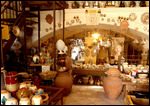


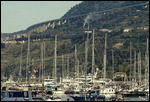


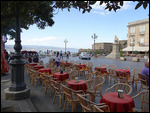







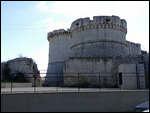
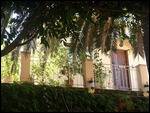





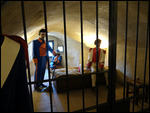
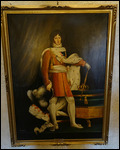

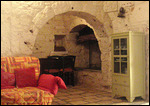
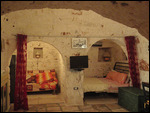


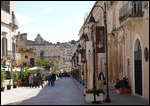
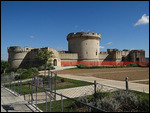
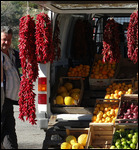


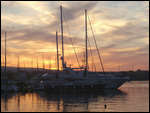
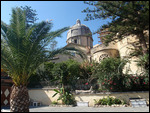



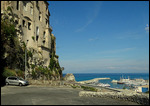
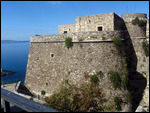
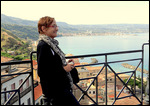




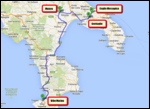

Rob and Lynn Taylor
2013-10-23
Wow Stu and Trish
What a magnificent comentary and such informatoin. Amazing.
Keep on having a wonderful time. You've sure earned it.
All good here and all the reasons for coming here have been and I am sure will continue to be met hugely.
Love from us guys and God bless for the rest of your fine journey.